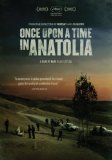| Reviews & Columns |
|
Reviews DVD TV on DVD Blu-ray 4K UHD International DVDs In Theaters Reviews by Studio Video Games Features Collector Series DVDs Easter Egg Database Interviews DVD Talk Radio Feature Articles Columns Anime Talk DVD Savant Horror DVDs The M.O.D. Squad Art House HD Talk Silent DVD
|
DVD Talk Forum |
|
|
| Resources |
|
DVD Price Search Customer Service #'s RCE Info Links |
|
Columns
|
|
|
Once Upon a Time in Anatolia
THE MOVIE:
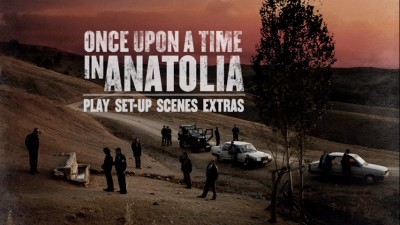
Three cars barrel down a winding country road in the dead of the night. The middle car has three police officers, a handcuffed suspect who is supposed to be giving directions, and a sober doctor. The cops, for lack of a better topic of discussion, are debating different kinds of yogurts. They've been at this awhile. The stops they've made have yielded no results, and neither will the next one. The suspect has promised to lead them to the body he's confessed to killing. Yet, he can't seem to remember where it was. "It was dark. I was drunk. It was by the round tree." One of the other vehicles is an army jeep with soldiers. In the lead, the local prosecutor in charge of the case. He's had to stop and urinate five times.
These are the mundane details of Once Upon a Time in Anatolia, Turkish filmmaker Nuri Bilge Ceylan's anything-but-mundane 2011 drama. The writer/director of the remarkably rendered relationship picture Climates has now turned his talents toward the police genre. His camera follows the players on their frustrating night and into the next morning, examining the brittle nerves and the seemingly fragile, but surprisingly strong relationships between local law enforcement. In the midst of their searching, we learn who these men are, from the most basic details of their personal habits to the mistakes they've made in their lives. There is even a pause where two characters share their thoughts on mortality. It's a beautiful sequence. Ceylan doesn't represent it as an average conversation, but instead shoots the characters against the picturesque countryside, letting cinematographer Gökhan Tiryaki take control, and altering the audio so that it's almost like the men are speaking via telepathy. We are eavesdropping on their innermost thoughts.
It's a small move, not very elaborate, one of many in a film that is full of poetic gestures. Once Upon a Time in Anatolia is a surprising recontextualization of standard genre procedures. The extended running time (over two-and-a-half hours) frees Ceylan from the normal demands of a police mystery, giving him time to explore all the details that surround an investigation, not just the particulars of the case. The characters can then become human, and not just functionaries in service to the plot. The majority of the picture is the search for the body, including a brief stop at a remote village for some food and rest. Once the body is found, it shifts back to the city, where the exhausted men deal with the emotional fall-out of the gruesome scenario. The increasingly cynical police lieutenant (Yilmaz Erdogan) takes a back seat, having had enough of all the death yet equally weary of going home and dealing with a trying domestic situation (though he never says outright, we get the impression his son is autistic). The story instead shifts to the doctor (Muhammet Uzuner) and the lawyer (Taner Birsel) as they prepare for the autopsy. The two men have been growing closer over the night, sharing an ongoing dialogue about a story the prosecutor told the doctor about a woman who predicted her own death five months ahead of time. As the practical-minded scientist questions the reality of the scenario, a deeper truth is uncovered, though one that unfortunately doesn't reveal to the two men that they might share similar tragedies from their pasts.
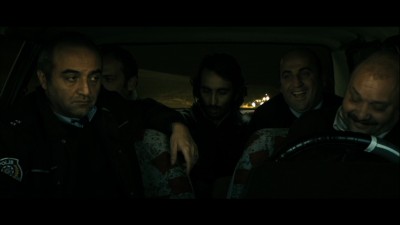
Ceylan builds many parallels of this kind. Just as the truth is uncovered about the prosecutor's story, so does the lead officer get deeper into the truth about why one man is dead and why another (Firat Tanis) is leading them on a possible wild goose chase. Here the cop and the killer also share some common ground: both are fathers and both have come to their troubles due to their relationships (or lack thereof) with their sons. Generational questions are raised throughout Once Upon a Time in Anatolia. The times change, yet the concerns of men do not; nor is the majesty of the countryside they live in, with its hidden histories, ever dulled, despite the best efforts of the worst among us. In the end, we are just members of the food chain. Man is an all-too-common animal who refuses to acknowledge his roots; in much the same way the outer village loses its youngest to the city, we grow out of touch with what makes us who we are.
Once Upon a Time in Anatolia is one of those movies where seemingly "nothing" happens, but where much is accomplished at the same time. If you approach it with the idea that a cops-and-killers story needs shoot-outs and chases and a firm resolution, you will only find frustration with Ceylan's cinematic narrative. The true wonder of the director's technique is in how he creates his own space. He carves out a unique pocket dimension where time and circumstance operate differently. As a viewer, stepping into that space can be as freeing for you as it was for the storyteller. One's sense of pacing and expectation change once you aren't concerned with the procedural fiction hitting all the expected marks. Instead, you become part of the unfolding reality, and you realize what a disservice more conventional pacing can do to a movie and your enjoyment of it. When you're immersed in it, Once Upon a Time in Anatolia moves faster and is more fascinating than any quick-cut action picture. Not knowing where the story is going to go or in what fashion it will get there makes every moment a discovery.
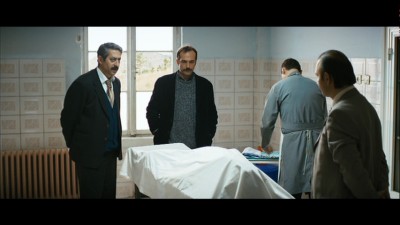
THE DVD
Video:
The widescreen (2.35:1) presentation of Once Upon a Time in Anatolia looks wonderful. Gökhan Tiryaki's beautiful photography is sharply rendered, with vivid colors and a remarkable clarity of detail. The open fields and shifting skies provide a beautiful backdrop that both humbles and amplifies the tiny humans locked in this drama. There are hot colors and cold colors, oranges and grays, and they all look equally fantastic.
Sound:
The original Turkish audio is mixed in Dolby 5.1. The soundtrack is immersive and subtle, with lots of tiny effects that create a full surround atmosphere. The optional English subtitles are elegantly written and perfectly timed.
Extras:
The film comes with a small booklet featuring notes about director Nuri Bilge Ceylan. The auteur is also the focus of a 24-minute interview included on the disc.
Other on-disc extras are a 48-minute collection of short featurettes detailing the movie's reception at Cannes, including red carpet and press events.
A more scholarly experience is the 24-minute "Lost in Thought," a video essay by Harvard film archivist Haden Guest. This not only focuses on Anatolia, but Ceylan's overall filmography and style.
Finally, we get the theatrical trailer. We do not, however, get the long making-of documentary that appears to be exclusive to the Blu-Ray.
FINAL THOUGHTS:
Nuri Bilge Ceylan's Once Upon a Time in Anatolia is an incomparable cinematic endeavor. It's a police drama, but it's also a travelogue and an existential parable. Its story encapsulates 24 hours in the lives of Turkish law enforcement trying to get to the bottom of a murder, to find the body and find out why the crime occurred. In the midst of this, the participants are given time to examine their own place in this event and in the world at large. It's a unique take on a common story, redefining genre, and establishing its own special space in which Ceylan can work his magic. Once Upon a Time in Anatolia is both riveting and revelatory. Highly Recommended.
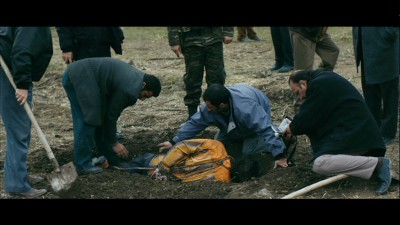
Jamie S. Rich is a novelist and comic book writer. He is best known for his collaborations with Joelle Jones, including the hardboiled crime comic book You Have Killed Me, the challenging romance 12 Reasons Why I Love Her, and the 2007 prose novel Have You Seen the Horizon Lately?, for which Jones did the cover. All three were published by Oni Press. His most recent projects include the futuristic romance A Boy and a Girl with Natalie Nourigat; Archer Coe and the Thousand Natural Shocks, a loopy crime tale drawn by Dan Christensen; and the horror miniseries Madame Frankenstein, a collaboration with Megan Levens. Follow Rich's blog at Confessions123.com.
|
| Popular Reviews |
| Sponsored Links |
|
|
| Sponsored Links |
|
|
| Release List | Reviews | Shop | Newsletter | Forum | DVD Giveaways | Blu-Ray | Advertise |
|
Copyright 2024 DVDTalk.com All Rights Reserved. Legal Info, Privacy Policy, Terms of Use,
Manage Preferences,
Your Privacy Choices | |||||||









